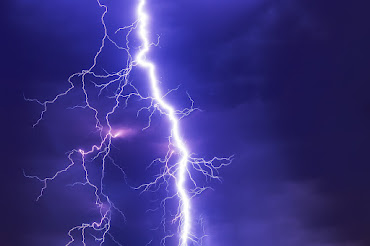All
about Lightning, its Benefits and Harms
Table of Contents
1.
Introduction
2.
The Science behind Lightning
5.
Safety Measures during Thunderstorms
6.
Conclusion
Introduction
Lightning is a powerful natural
phenomenon that has both fascinated and terrified humans throughout history. It
is an electrical discharge that occurs during thunderstorms, producing a
brilliant flash of light and a loud thunderous sound. This article explores the
science behind lightning, its benefits, the potential harms it can cause, and
safety measures to protect yourself during thunderstorms.
The Science behind
Lightning
Lightning is a result of the buildup
and discharge of electrical energy in the atmosphere. It occurs when there is a
difference in electrical charge between the ground and the clouds. The
discharge happens in a series of steps:
1.
Electrons
are stripped from atoms, creating a negatively charged area called a stepped
leader.
2.
The
stepped leader moves towards the ground in a series of rapid steps.
3.
When the
stepped leader gets close to the ground, a channel of ionized air called a
return stroke is formed.
4.
The return
stroke carries the electrical current back to the cloud, resulting in the
visible flash of lightning.
Benefits of Lightning
1. Nitrogen Fixation
Lightning contributes to the natural
process of nitrogen fixation. The intense heat and energy of lightning can
convert atmospheric nitrogen into a form usable by plants, which is essential
for their growth and development.
2. Ozone Production
Lightning helps in the production of
ozone in the atmosphere. The electrical discharge breaks down oxygen molecules,
allowing them to recombine into ozone. Ozone plays a crucial role in filtering
harmful ultraviolet (UV) radiation from the sun.
Harms of Lightning
1. Injury and Death
Direct strikes from lightning can
cause severe injuries and even death. The high voltage and current associated
with lightning can disrupt the body's electrical systems, leading to cardiac
arrest, burns, neurological damage, and other life-threatening injuries.
2. Property Damage
Lightning strikes can cause
significant damage to buildings, infrastructure, and electronic devices. The
intense electrical current can destroy electrical systems, start fires, and
damage sensitive equipment connected to power sources or communication
networks.
Safety Measures during
Thunderstorms
When thunderstorms are approaching,
it's crucial to take appropriate safety measures to minimize the risks
associated with lightning. Here are some guidelines to follow:
·
Seek
shelter indoors or in a fully enclosed vehicle with a solid metal roof.
·
Avoid open
fields, high ground, tall isolated trees, and bodies of water.
·
Avoid
using electronic devices connected to power sources or landline phones during a
thunderstorm.
·
If caught
outside with no shelter, crouch down low, but avoid lying flat onthe ground.
Maintain a low profile to minimize your risk of being struck.
·
Wait at
least 30 minutes after the last sound of thunder before resuming outdoor
activities.
Conclusion
Lightning is a fascinating natural
phenomenon with both benefits and harms. Understanding the science behind
lightning helps us appreciate its role in nitrogen fixation and ozone
production. However, it's essential to recognize the potential dangers associated
with lightning, such as injury, death, and property damage. By following safety
measures during thunderstorms, we can minimize the risks and stay safe.
Frequently Asked
Questions
Q: Can lightning strike the same place twice?
A: Yes, lightning can strike the
same place multiple times, particularly tall structures or objects that provide
a path of least resistance for the electrical discharge.
Q: Is it safe to take shelter under a tree during a
thunderstorm?
A: No, seeking shelter under a tree
is dangerous during a thunderstorm. Lightning tends to strike the tallest
objects in an area, and trees can attract lightning, increasing the risk of a
strike.
Q: How can I protect my electronic devices from lightning
strikes?
A: To protect your electronic
devices, it's recommended to use surge protectors and unplug them during
thunderstorms. Surge protectors help divert excess electrical energy, reducing
the risk of damage caused by power surges.


Post a Comment